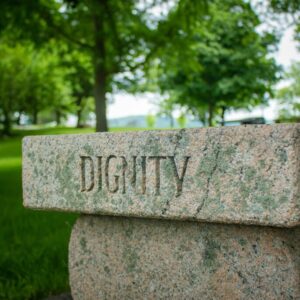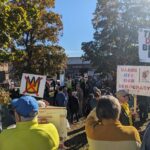
Progressive movements are facing an unprecedented assault on their infrastructure, including politically motivated investigations, the weaponization of counterterrorism laws through a new consolidated national domestic terrorism strategy, and a significant loss of funding. Nonprofits are projected to lose $81 billion in funding over the next 10 years. These efforts destroy movement infrastructure by targeting funding; cutting off resources; and overwhelming organizations with legal, reputational, and regulatory assaults designed to dismantle them.
In response to this “defund and dismantle” strategy, movements urgently need a “defend and build” strategy by leveraging catalytic investment as a framework and tool—a term used in the for-profit sector to mean early-stage funding for projects that are perceived to be high-risk. Catalytic investors absorb risk and losses with the aim of identifying successful interventions that can have a reverberating impact for a field. Translated into movement terms, catalytic funding means resourcing bold, experimental, and community-led models that may not have immediate returns but hold the potential to transform systems. While communities have long sustained themselves through mutual aid networks, cooperatives, and other grassroots survival models, such efforts cannot by themselves match the scale of today’s threats, especially as they are also being targeted.
Authoritarian opponents deploy clear and disciplined capital strategies, steadily growing financial capital through equity, debt, assets, markets, and philanthropy in order to build social and political capital.
The Right understood the importance of making catalytic investments early, deploying philanthropic investment as a form of capital power to seed integrated infrastructure. By contrast, moments of crisis have often been used to strip progressive movements of resources and legitimacy. After 9/11, for example, Muslim-led organizations were rapidly defunded, left exposed and weakened. To this day, progressive movements rarely have access to capital at scale and are frequently deemed “too risky” to support.
Most nonprofits remain dependent on government contracts or philanthropic grants, with little control over their own resources and limited ability to leverage capital as a tool for building power. Even when supported, funding streams are typically fragmented, short-term, and precarious.
Meanwhile, authoritarian opponents deploy clear and disciplined capital strategies, steadily growing financial capital through equity, debt, assets, markets, and philanthropy in order to build social and political capital. They use financial capital as a multiplier, directly tying it to their strategies for consolidating power.
How Did Philanthropy Help Seed the Right’s Infrastructure?
Philanthropy continues to be weaponized as a strategic tool to reshape American society and politics. As Jane Mayer details in Dark Money: The Hidden History of the Billionaires Behind the Rise of the Radical Right, ultra-wealthy conservatives turned foundations into vehicles for advancing their agenda, scaling their giving at unprecedented levels.
Tax breaks enabled them to fund a vast infrastructure of think tanks, academic centers, media platforms, legal advocacy groups, grassroots movements, and political action committees. These investments built leadership pipelines that embedded conservative actors across government, courts, corporations, academia, and philanthropy, including shifting the Republican Party further to the right.
After 9/11, Muslim-led organizations became the testing ground for a coordinated campaign to dismantle institutional infrastructure through the weaponization of national security and counterterrorism laws.
The result was a “fully integrated” political machine, designed to dismantle reforms from the New Deal, Great Society, and Progressive Eras, replacing them with deregulation, deep tax cuts, and weakened social services. As noted in Mayer’s book, by 2016, the Koch brothers’ network had assembled an $889 million war chest, backed by billionaires worth $214 billion, effectively remaking philanthropy into a private engine of political dominance.
The returns on this strategy have been staggering. Today, right-wing organizations claim millions of advocates across all 50 states, tens of millions of voter contacts, and hundreds of legislative victories in a single year. They continue to invest in coordinated infrastructure that shapes opinion, policy, and elections with surgical precision.
Their success demonstrates what’s possible when capital is deployed at scale with a clear political vision.
What Happens When We Don’t Invest: Cautionary Lessons from Post-9/11
After 9/11, Muslim-led organizations became the testing ground for a coordinated campaign to dismantle institutional infrastructure through the weaponization of national security and counterterrorism laws. The state froze assets, prosecuted and deported leaders, and leveled vague accusations without due process.
In 2001, Holy Land Foundation (HLF), the largest Muslim charity at the time in the United States, was dismantled and used as an example, with 246 organizations and individuals branded as “unindicted co-conspirators.” What followed was the dismantling of key organizations and a systematic assault on the financial infrastructure that could have helped Muslim communities withstand the decades of war and repression to come.
The HLF case in particular cast suspicion on zakat, a religiously required practice of wealth redistribution that the World Bank estimates generates up to $1 trillion per year in Muslim giving globally. Zakat has long been a pillar of Muslim giving, channeling funds to communities facing war, climate disasters, displacement, and famine. This communal and religious practice was suddenly subjected to heightened scrutiny given the broad and chilling “material support for terrorism” laws that had an abysmal effect on Muslim giving.
Scrutiny also extended to sadaqah, voluntary giving often used to fund mosques, schools, and other community institutions, and to waqf (endowments) that have historically supported land and infrastructure for Muslim life in the United States and abroad. Globally, the Countering the Financing of Terrorism (CFT) framework has further entrenched this dynamic, disrupting Muslim financial infrastructure.
Philanthropy reinforced this assault by adopting the state’s national security lens, mirroring the risk aversion of banks and donors. The result was a financial ecosystem designed not to protect communities but to weaken them: debanking, deplatforming, and donor flight crippled existing entities while reshaping Muslim institutions to reflect the state’s discriminatory priorities. A new infrastructure emerged aligned with those priorities, while groups that resisted faced repression. Yet many of those groups also carry wisdom on how to endure assaults and persist in building power even under hostile conditions.
Nearly 24 years later, the reverberations remain a stark warning: When catalytic investment is absent, including in times of heightened repression where existing infrastructure is under attack, repression defines the terrain. This is part of a broader pattern of financial repression that has targeted many communities, from the collapse of Black banking infrastructure after emancipation to the theft of Indigenous lands. These histories reveal how capital has long been weaponized to dismantle community power, underscoring the urgency of a defend and build strategy.
The Playbook Is Back
Today, the same playbook is being deployed against broader movements and civil society. If the Right has shown us what’s possible when capital is used as a weapon, and Muslim civil society has shown us what happens when investment is absent, the question now is: What can be done differently this time?
It requires reimagining capital as a force for building durable movement infrastructure. Below are five ways catalytic investments can make that possible.
- Leverage capital power for building movement infrastructure.
Catalytic investment is about organizing capital with the same intentionality with which movements organize people. Progressive philanthropy and movements must treat money and capital as a tool for building movement infrastructure. To do this, funders and movements both must develop a theory of change that recognizes their role in organizing capital and deploy it boldly and strategically at a scale that matches the forces that seek to destroy progressive movements.
- Seed early and pre-seed innovations through community-led ventures backed by incubators, accelerators, and flexible funds.
Catalytic investments are needed to build ecosystem anchors that can provide wraparound services to emerging entities and support bold ideas. An infrastructure of incubators, accelerators, movement-governed funds, fiscal sponsors, and back-end offices is needed to support experimental models and bold ideas at their earliest and riskiest stages. This requires flexibility to support nonprofits, cooperatives, and new entities rooted in collective ownership, democratic governance, and wealth redistribution. Infrastructure must not only sustain existing organizations, but also nurture innovation, helping bold ideas grow into proofs of concept that can attract multiple streams of funding across ecosystems. Tomorrow’s infrastructure must be seeded today, even in untested forms, to ensure movements can experiment, adapt, and thrive.
- Strengthen financial infrastructure by resourcing pooled funds, cooperative institutions, and values-aligned banking.
History shows us what happens when communities attempt to build financial systems but face structures designed to deny them stability or wealth. After emancipation, the collapse of the Freedman’s Savings Bank in 1874 wiped out Black wealth and shattered trust in banking for generations. After 9/11, Muslim communities faced widespread debanking and “de-risking” through the countering of financing of terrorism (CFT) apparatus, creating a global financial fault line that criminalized solidarity while enabling extraction from war economies.
These patterns continue to impact movement groups, especially those rooted in directly affected communities. This is why catalytic investment in financial infrastructure that is movement-led and aligned with movement values is critical. Building this infrastructure also disrupts the competitive dynamic that forces movement groups to fight over scarce philanthropic dollars because movement capital is consolidated.
This includes:
-
- Pooled Funds: Seeding collective capital governed by movements, with flexibility to respond quickly to strategic needs.
- Movement-Led Institutions: Support for credit unions, CDFIs, co-ops and other entities that build structures that ensure money circulates through systems of community control rather than extractive systems.
- Collective Reserves: Pooling healthy reserves held by groups into liquid, return-bearing accounts to fund projects that can demonstrate proof of concept and can be scaled through investments.
- Values-Aligned Banking: Partnering with movement-aligned banking institutions that work in collaboration with communities and movements, while ensuring reserves are fully insured against bank runs and financial shocks to prevent deepening of mistrust of banks and financial institutions.
If the Right has shown us what’s possible when capital is used as a weapon, and Muslim civil society has shown us what happens when investment is absent, the question now is: What can be done differently this time?
1. Expand legal and advocacy infrastructure by dismantling discriminatory compliance regimes and growing a pipeline of lawyers who can defend and innovate new models.
Catalytic investment is needed to seed new legal defense and advocacy infrastructure. Lawyers and advocates must have the capacity and resources to fight to reshape regulatory regimes that block investment, scaling, and innovation. Dismantling discriminatory rules and compliance systems enables communities to deploy their own methods of building power and supports new experiments that can grow into lasting infrastructure. Fortified legal infrastructure not only protects what exists, it creates the conditions for seeding new growth.
4. Transfer movement power across generations to ensure wealth, knowledge, and leadership remain rooted in the communities that built them.
Catalytic investments are needed to ensure the intentional transfer of movement power across generations. Right now, movements are consumed with rapid-response work, leaving little room for documenting and passing on strategies, skills, and institutional knowledge. Without this investment, movements face a continual loss of knowledge and jeopardize the ability to build on the successes of the past, forcing each generation to start over at the emergent or seed stage. This is especially important as ideas birthed in progressive movements are continually co-opted, repackaged, and deployed by the Right, often with far greater resources and infrastructure.
Sustained support would allow communities not only to preserve decades of hard-earned knowledge, but also to scale and deepen their impact, ensuring that movement power remains firmly rooted within communities that seeded such work.
The hostile political terrain movements are facing requires new modes of thinking, organizing, and building that are only possible if innovation is taken seriously and resourced accordingly. New entities and ecosystems are needed to experiment, and develop fresh models. Catalytic investment can offer a critical intervention at a point when progressive movements are being labeled as too risky to support.
Rather than retreating, deploying catalytic investment into movement infrastructure at scale to meet this moment is key. The past offers a chilling lesson—when we fail to invest in movements at scale, the opposition consolidates power while progressive infrastructure crumbles. The choice is urgent and unmistakable: Either defend and build movement infrastructure now or be defunded and dismantled.













